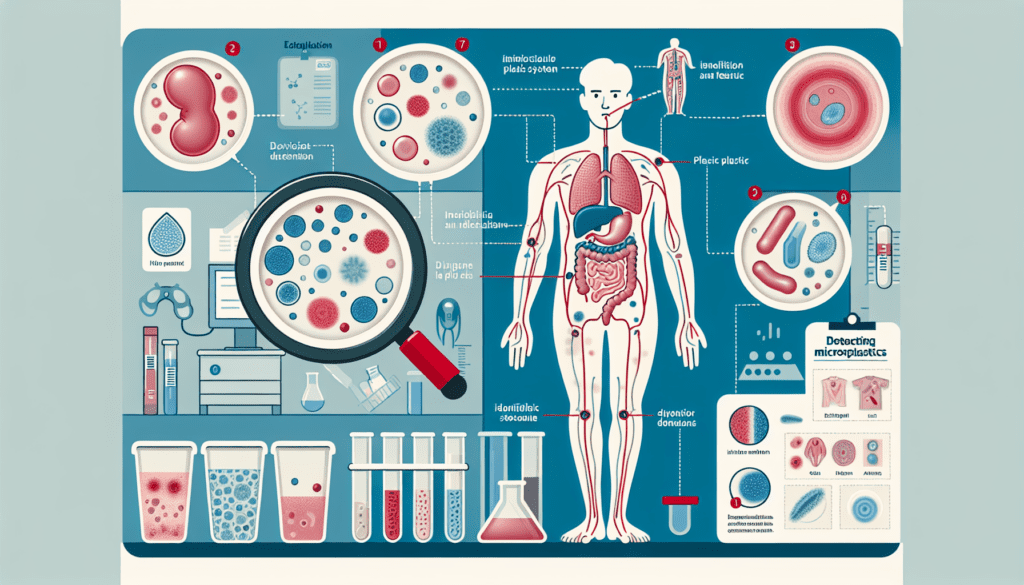
Detecting Microplastics in the Human Body: A Simple Guide
Microplastics, tiny plastic particles less than 5mm in diameter, have infiltrated every corner of the globe, from the deepest oceans to the highest mountains. Alarmingly, these minute pollutants are now finding their way into the human body, prompting serious concerns about potential health implications. Understanding how microplastics enter our bodies and the methods available for detecting them is crucial for both individual health and global awareness.
What are Microplastics?
Microplastics are tiny plastic fragments less than 5mm in size, lurking in unsuspected places. These can be primary microplastics, like the microbeads in your exfoliating face scrub, or secondary microplastics, which originate from the breakdown of larger items such as plastic bottles and bags left to the mercy of the sun and waves. From packaging materials to synthetic clothing fibers released during laundry, and even tire dust from roads, these particles make their way into our environment—and subsequently, into us.
Pro Tip: Opt for natural skincare products without “polyethylene” (PE) or “polypropylene” (PP) on the ingredients list to reduce your contribution to microplastic pollution.
Entry Points into the Human Body
How do these microscopic invaders enter our bodies? Here are the main culprits:
Inhalation: Ever thought about what’s in the dust you’re breathing? Microplastic fibers can float in the air, especially in urban areas where they mix with dust and airborne particles.
Consumption of Water and Food: Drinking water (yes, even bottled water) and consuming seafood are common ways microplastics enter our bodies. Studies suggest that microplastics are found in over 90% of bottled water and in many fish and shellfish sold in markets.
Direct Contact: Using everyday products like certain toothpastes and cosmetics can also introduce microplastics directly to our system through our skin and gums.
By the Numbers: An alarming statistic from a study reveals that the average person could be ingesting approximately 5 grams of plastic weekly—the equivalent of a credit card’s weight in plastic materials!
What You Can Do:
Filter Your Water: Consider using a water filter that can capture microplastics to minimize your ingestion from tap or bottled water.
Eat Fresh: Reduce consumption of processed foods which tend to have higher levels of contamination and opt for fresh, unpackaged food chain.
Be Mindful of Air Quality: In urban areas, using air purifiers can help reduce the amount of inhaled microplastic fibers.
Detecting Microplastics in the Human Body
The quest to uncover the presence of microplastics in human tissues and fluids is an intricate science. Researchers often focus on human samples like human blood, human lung tissue, and even human feces for clues. Techniques like Raman spectroscopy and Fourier-transform infrared (FTIR) spectroscopy are pivotal.
They delve into the chemical makeup of microplastics, shedding light on their types and prevalence in such human matrices. This approach not only tracks plastic particle pollution in our bodies but also how it breaches barriers like the blood-brain barrier and impacts areas like the gastrointestinal tract and immune cells.
Personal Detection Efforts
While it’s currently impossible to personally detect microplastics within our bodies—owing to the specialized equipment and know-how required—there’s power in proactive behavior. By choosing fresh, unpackaged foods, saying no to single-use plastics, and avoiding products with microbeads, we actively reduce plastic pollution. These steps are crucial in minimizing our personal exposure and, by extension, the food chain’s overall burden of microplastics.
The Importance of Professional Analysis
The complexity of identifying and analyzing microplastics underscores the indispensable role of professional labs. Equipped with the necessary technology and expertise, these labs are the backbone of our understanding of microplastics in humans.
From blood samples to human lung tissue and even human placenta, the scientific community relies on precise sample preparation and analysis to map out the landscape of plastic pollution’s impact on human health. Research in this field is vital, offering insights into human exposure to microplastics, their journey through our bodies, from inhaled particles to those ingested, and their eventual accumulation in different organs, including potential penetration into human cell lines.
This concerted effort by the scientific community illuminates the pressing need to tackle plastic pollution head-on, to safeguard human health from the microscopic invaders we’ve unleashed.
The Future of Microplastic Detection

The fight against microplastic pollution is gaining momentum, and tech innovation is leading the charge. Technological leaps are making the daunting task of detecting these tiny pollutants in our bodies simpler and more budget-friendly.
Imagine This: State-of-the-art microscopy and imaging techniques that can spot and analyze microplastics with unprecedented ease. We’re talking about groundbreaking tools that could screen a wider population without the financial strain.
Exciting Developments Ahead
Non-Invasive Methods: The buzz is all about developing methods that don’t require a single needle prick. Monitoring your exposure could soon be completely non-invasive, changing the game in health monitoring.
The Stark Reminder: Microplastics in our bodies signals a collective plastic hangover. It’s a loud call to action that demands a global response.
What’s Currently Working
Scientific Expertise: For now, scientists and their sophisticated techniques are our best allies in tracking these invaders, providing us with the hard facts.
Your Role in This Fight
Reduce Plastic Use: Every reusable bottle or bag you choose makes a difference.
Support Environmental Initiatives: Your actions, however small, add up in the battle against microplastic pollution.
💡 Pro Tip: Keep an eye out for apps and devices in development aimed at personal microplastic detection. Tracking your exposure could become as easy as checking your phone.
📊 By the Numbers: Did you know? Researchers found microplastics in 83% of tap water samples worldwide. This startling statistic underscores the urgency for innovative solutions.
In Conclusion:
Awareness
Innovation
Individual Action
Together, these steps form the path to not just detecting, but also significantly reducing our exposure to microplastics. Let’s join forces and pave the way to a cleaner, healthier planet.
